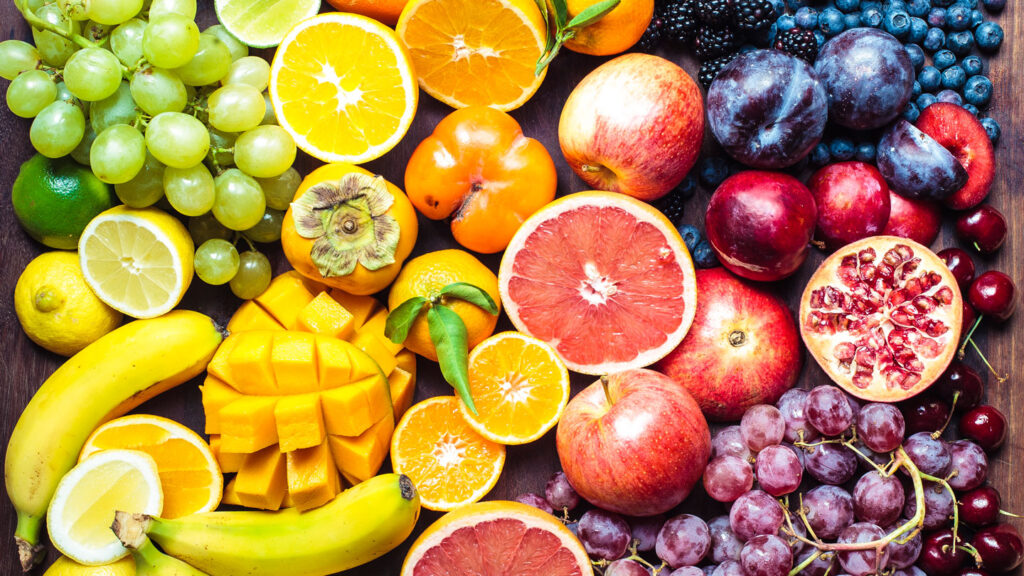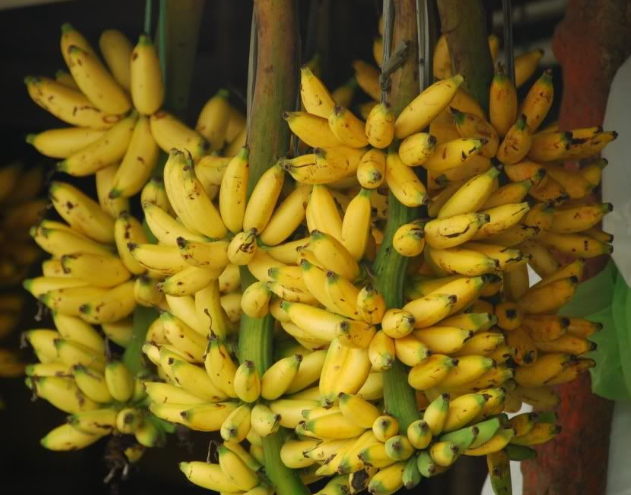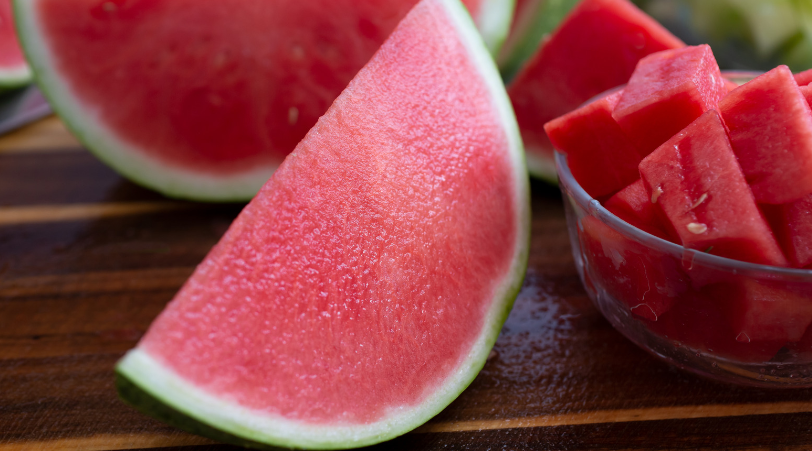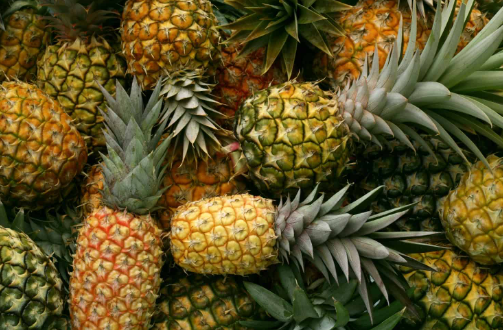The Rollinia Deliciosa, also known as Biriba, Wild Sweetsop, or Lemon Meringue Pie Fruit, is a delightful fruit from South America. This plant takes a medium level of care and usually starts giving fruit in two to three years.
When the Rollinia fruit ripens, it turns a bright yellow and should be avoided if it has dark spots. However, black tips on the spikes are fine. The ripe fruit is soft when you press it, and the skin can be taken off easily, showing shiny white or clear, jelly-like insides. This part tastes a little sour and is similar to a mix of pineapple, banana, and coconut, among other flavors. There are also tiny, oval seeds, which should not be eaten.
You can enjoy the fresh Rollinia fruit by cutting it open and eating the sweet inside part. In Brazil, where it’s known as biriba, people use it in various recipes like wine made from its juice, sauces, custards, and ice cream. The fruit is also popular in other places like Southern Mexico, Florida, and Hawaii because it has a unique taste.
Since Rollinia fruit is delicate, those who pick it try to make it last longer than a week by harvesting it while it’s still green. Despite being a bit slimy, many people love this tropical treat. To handle the fruit without damaging it, sellers often dangle it from strings or wear gloves if they are touching it at home or in stores.
It’s more fitting to call this lovely fruit Rollinia deliciosa instead of “snotfruit,” given its fantastic taste! This exotic plant offers flavors that will surely excite your palate.
Table of Contents
The Taste Adventure
Rollinia fruits have a specially rich taste. They combine sweetness with a bit of tartness and have a smooth, jelly-like feel without any fibers. It’s a delightful and interesting flavor that many find very enjoyable.
Tradition and Uses
In its home in the Amazon, people have used the Rollinia fruit for its healthful and culinary uses for a long time. In Brazil, they make wine by fermenting its sweet pulp. Historically, it’s been eaten as an energizer and to keep cool in hot weather, and to prevent a disease called scurvy. They’ve also used the ground-up seeds for treating digestive problems. And the tree itself provides wood that’s strong and heavy, good for building parts of boats, crafting boxes, and more.
Growing Rollinia
Growing Rollinia fruit can be satisfying. There are a few different ways to do this, whether you’re new to gardening or have more experience. The most common method is through seeds, which can stay good for as long as two years if you keep them dry and out of the light. You can also use air-layering or grafting to make sure you get the same kind of plant as the original one, as these techniques make a copy of an existing tree.
To grow from seeds, first take the seeds out of the fruit. Then plant them in trays with wet soil or planting mix. Put the trays where it’s warm and bright, and water them so the soil doesn’t dry out. Usually, the seeds will start to grow in about six weeks. After that, move them to their own pots with potting mix or soil and keep taking care of them like normal plants.
With air-layering, find a young branch at least 2 inches thick on an existing Rollinia tree. Take away a piece of the bark and wrap the spot with wet moss and plastic wrap. Roots should start to appear under the moss in one to three months. Grafting is trickier and needs more know-how, but it involves attaching a piece of one tree to another tree so they grow together, which usually takes about five to six months before you see success.
If you prepare everything well and carefully follow the steps, you can successfully grow Rollinia fruit using any of these methods.
When to Find Rollinia
Rollinia fruits are typically available during the warmer months. They are sold from spring to the beginning of summer. So if you want to try them, look for them during this time.
Nutritional Richness
Rollinia fruits are packed with nutrients and offer several health benefits. Here’s what they contain:
- They’re rich in calcium, phosphorus, vitamin C, and iron.
- They provide protein and carbohydrates.
- They include important amino acids like lysine, methionine, threonine, and tryptophan.
Eating Rollinia fruits is a tasty way to add more nutrients to your diet, and it may help keep you healthy or even get your health better.
Health Benefits of Rollinia Fruit
- Boosting Immunity: Rollinia fruit has lots of vitamin C, which is good for strengthening your immune system and fending off sickness. Vitamin C also helps stop cell damage caused by free radicals, which can lead to diseases.
- Better Digestion: The high fiber content in Rollinia fruit helps your digestive system by keeping bowel movements regular and preventing constipation. Fiber is also good for keeping your blood sugar level steady, reducing your risk of getting diabetes.
- Weight Loss Help: Rollinia fruit doesn’t have many calories but has a lot of fiber, making it a great snack for those looking to lose weight. Fiber keeps you feeling full for longer, so you end up eating less throughout the day.
- Heart Health: Lots of potassium in Rollinia fruit can help lower your blood pressure and cut your risk of heart problems. Potassium also helps keep your body fluids balanced and makes sure your nerves and muscles work well.
- Antioxidant Rich: Rollinia fruit has antioxidants that protect your cells from damage by free radicals. Antioxidants can also lower inflammation in your body and help prevent long-term illnesses like cancer.
Where is Rollinia fruit from?
Rollinia fruit comes from the warm, tropical spots of South America, such as Brazil, Peru, and Venezuela. It has also been brought to other parts of the world, including Hawaii and Southeast Asia.
How does Rollinia taste?
Rollinia’s taste is sweet and creamy, similar to lemon meringue pie. It has a refreshing, citrus-like flavor with hints of other tropical fruits like banana, pineapple, and coconut.
How to Eat Rollinia Fruit?
You can eat Rollinia fruit as is, mix it into smoothies or salads, or use it in baking desserts. One way to enjoy the full flavor is by cutting it open and scooping out the inside with a spoon. You can also mix it with yogurt or cereal for a delicious breakfast. For a sweeter treat, bake it into pies or cobblers.





![What Is the National Fruit of Argentina and Why? [ANSWERED]](https://fruitonix.com/wp-content/uploads/2023/04/What-Is-the-National-Fruit-of-Argentina-.jpg)


![What Is the National Fruit of Korea And Why? [ANSWERED]](https://fruitonix.com/wp-content/uploads/2023/04/What-Is-the-National-Fruit-of-Korea-And-Why-1024x683.jpg)
